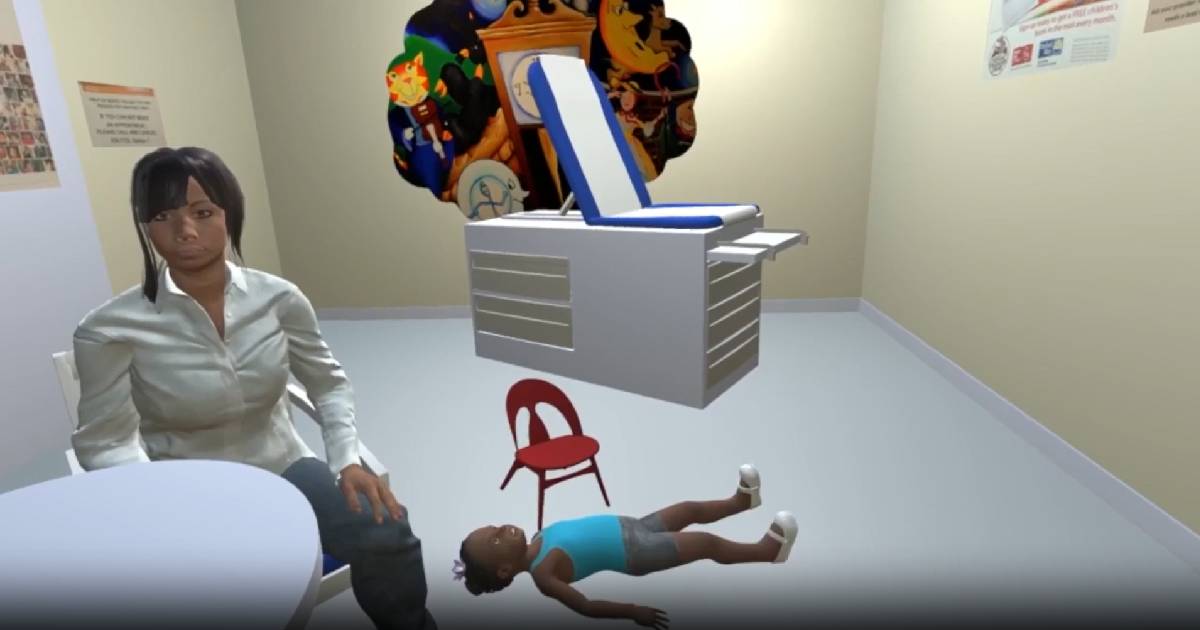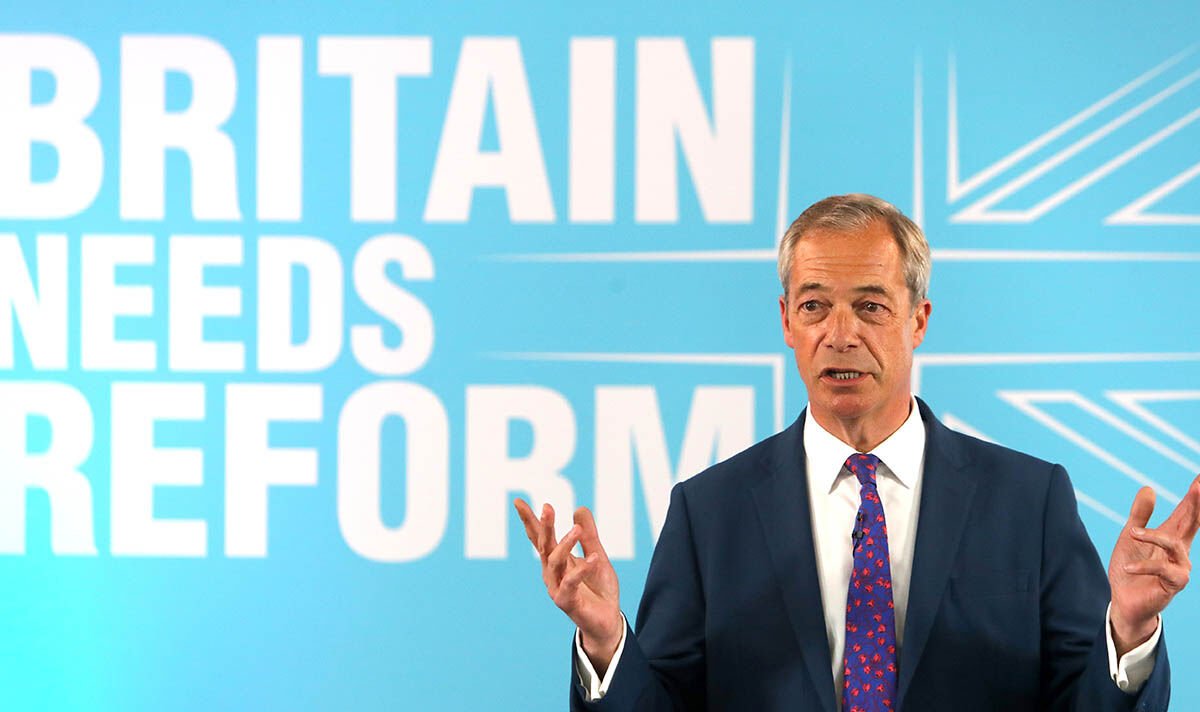Protecting Children's Mental Health: The Urgent Need For Investment

Table of Contents
The Current State of Children's Mental Healthcare
Insufficient Resources and Accessibility
The current system for providing mental healthcare to children is severely strained. A critical shortage of resources and accessibility issues create significant barriers to care, particularly for children in underserved communities. Long waiting lists are common, leaving many children without timely access to the help they need.
- Lack of child psychiatrists: Many areas face a severe shortage of child and adolescent psychiatrists, leading to extensive wait times and limited availability of specialized care.
- Insufficient school counselors: Schools often lack adequate resources to provide sufficient counseling services, leaving many children without access to support within their educational environment.
- Inadequate insurance coverage: Many insurance plans offer limited coverage for mental health services, creating financial barriers for families seeking care.
- Geographical barriers: Children in rural or remote areas often face significant challenges accessing specialized mental health professionals due to distance and lack of transportation.
The disparities in access to mental healthcare are stark. Studies consistently show that children from low-income families, minority ethnic groups, and those in rural areas have significantly less access to quality mental health services compared to their more affluent counterparts. This inequality exacerbates existing health disparities and perpetuates cycles of disadvantage.
Early Intervention is Crucial
Early identification and intervention are critical for protecting children's mental health and preventing long-term problems. Addressing mental health concerns early can significantly improve outcomes and reduce the need for more intensive interventions later in life.
- Benefits of early intervention: Early intervention can help prevent the escalation of mild issues into severe disorders, improve academic performance, strengthen family relationships, and enhance overall well-being.
- Signs and symptoms of common childhood mental health disorders: Recognizing early warning signs, such as changes in behavior, mood, or sleep patterns, is crucial for early intervention. Parents and educators play a vital role in early detection.
- The role of parents and educators in early detection: Increased awareness and training for parents and educators are essential to facilitate early identification and intervention.
Programs like the [Insert example of a successful early intervention program] demonstrate the significant positive impact of early intervention on children's mental health. These programs highlight the effectiveness of proactive approaches and the long-term cost savings associated with preventing escalation of mental health issues.
The Economic Impact of Neglecting Children's Mental Health
Long-Term Healthcare Costs
The economic consequences of neglecting children's mental health are substantial. Untreated mental illness leads to significant long-term healthcare costs, including:
- Costs associated with untreated conditions: Hospitalizations, emergency room visits, long-term medication, and ongoing therapy contribute to significant financial burdens for families and healthcare systems.
- The economic benefits of early intervention: Early intervention reduces the need for more expensive and extensive interventions later in life, resulting in considerable cost savings.
- The potential savings from proactive investment: Investing in preventative mental health services for children offers substantial long-term economic benefits.
Studies have shown that the lifetime cost of untreated mental illness is significantly higher than the cost of providing timely and effective interventions. This highlights the economic imperative of proactive investment in children's mental healthcare.
Societal Costs
Beyond healthcare costs, neglecting children's mental health carries significant societal burdens:
- Impact on educational outcomes: Untreated mental health issues can lead to poor academic performance, school dropout, and reduced future earning potential.
- Increased risk of substance abuse: Children with untreated mental health issues are at a greater risk of developing substance abuse problems, leading to further healthcare costs and societal challenges.
- Higher rates of incarceration: Mental health issues are linked to higher rates of crime and incarceration, resulting in significant economic and social costs.
- Lost economic productivity: Untreated mental health problems can significantly impact an individual's ability to participate fully in the workforce, reducing overall economic productivity.
Research consistently demonstrates a strong correlation between untreated childhood mental health issues and negative societal outcomes. The economic and social costs of inaction far outweigh the investment required to address this growing crisis effectively.
Investing in Solutions: Strategies for Improvement
Increased Funding for Mental Health Services
Addressing the crisis requires a significant increase in funding for children's mental health services. This necessitates:
- Increased government funding: Governments must prioritize mental health funding, allocating sufficient resources to expand access to services.
- Private sector investment: Private sector companies can play a crucial role by investing in mental health initiatives and supporting research.
- Philanthropic contributions: Philanthropic organizations can contribute significantly to funding research, programs, and community initiatives focused on children's mental health.
Specific investments should focus on increasing the number of mental health professionals, expanding school-based programs, and establishing effective community outreach initiatives. Innovative funding models, such as outcome-based funding, can encourage efficiency and accountability.
Expanding Access to Care
Improving access to mental healthcare requires innovative strategies:
- The use of technology to expand reach: Telehealth and online mental health platforms can overcome geographical barriers and expand access to care for children in remote areas.
- Training more mental health professionals: Investing in training and education programs is crucial to address the shortage of mental health professionals, particularly those specializing in child and adolescent mental health.
- Addressing language and cultural barriers: Services must be culturally sensitive and linguistically appropriate to meet the needs of diverse communities.
Successful models of expanding access, such as mobile mental health units and community-based programs, demonstrate the feasibility and effectiveness of targeted initiatives.
Raising Awareness and Reducing Stigma
Public education campaigns are essential for raising awareness and reducing the stigma surrounding childhood mental health:
- Promoting mental health literacy: Educating the public about common childhood mental health disorders and the importance of seeking help can empower families to seek timely interventions.
- Challenging negative stereotypes: Addressing negative stereotypes and misconceptions can foster a more supportive and understanding environment for children and families.
- Empowering children and families to seek help: Encouraging open communication and reducing the fear of seeking help is crucial for early intervention.
Successful public awareness campaigns, such as [Insert example of successful public awareness campaign], can serve as models for effective strategies.
Conclusion
Protecting children's mental health is a moral imperative and an economic necessity. The current lack of investment in mental health services for children has devastating consequences, leading to significant healthcare costs, societal burdens, and long-term impacts on individual well-being. Early intervention is crucial, and expanding access to readily available, high-quality care is essential. We must prioritize protecting children's mental health by advocating for increased funding, expanding access to services, and reducing stigma. Join the movement to protect children's mental health. Invest in our children's future by supporting mental health initiatives. Let's prioritize protecting children's mental health together.

Featured Posts
-
 Newsround On Bbc Two Hd Full Tv Listings
May 03, 2025
Newsround On Bbc Two Hd Full Tv Listings
May 03, 2025 -
 Breaking News Attack On Gaza Freedom Flotilla Near Malta Watch Live
May 03, 2025
Breaking News Attack On Gaza Freedom Flotilla Near Malta Watch Live
May 03, 2025 -
 Rashford To Aston Villa Souness Weighs In
May 03, 2025
Rashford To Aston Villa Souness Weighs In
May 03, 2025 -
 Winning Lotto Numbers For Saturday April 12th
May 03, 2025
Winning Lotto Numbers For Saturday April 12th
May 03, 2025 -
 Nigel Farage In Shrewsbury Reform Party Leaders Visit Sparks Controversy
May 03, 2025
Nigel Farage In Shrewsbury Reform Party Leaders Visit Sparks Controversy
May 03, 2025
Latest Posts
-
 270 M Wh Bess Project In Belgium A Guide To Merchant Market Financing
May 04, 2025
270 M Wh Bess Project In Belgium A Guide To Merchant Market Financing
May 04, 2025 -
 Securing Funding For A 270 M Wh Battery Energy Storage System Bess Project In Belgium
May 04, 2025
Securing Funding For A 270 M Wh Battery Energy Storage System Bess Project In Belgium
May 04, 2025 -
 Belgiums 270 M Wh Bess Navigating The Complexities Of Merchant Market Financing
May 04, 2025
Belgiums 270 M Wh Bess Navigating The Complexities Of Merchant Market Financing
May 04, 2025 -
 The Financial Challenges Facing Offshore Wind Energy Projects
May 04, 2025
The Financial Challenges Facing Offshore Wind Energy Projects
May 04, 2025 -
 Offshore Wind Energy Weighing The Costs Against The Benefits
May 04, 2025
Offshore Wind Energy Weighing The Costs Against The Benefits
May 04, 2025
